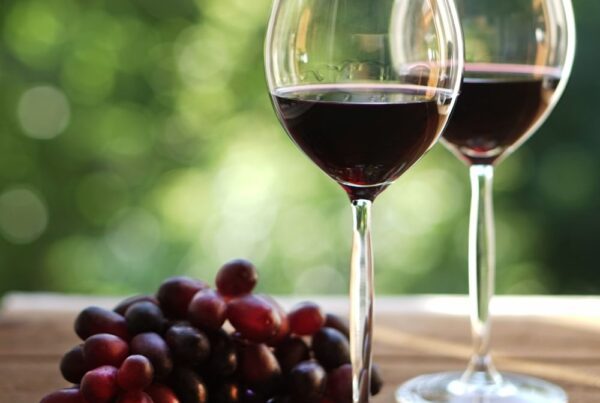The Portuguese have been making Port wine for centuries and the pinnacle of Port is Vintage Port.
In this article, you will learn what makes a Port vintage and why it is so special.
Key takeaways:
- Vintage Ports are produced in limited quantities and only during exceptional harvest years.
- They are age-worthy Ports, made with the best grapes from the best vineyards. They are, therefore, easily the most prestigious of all Port wines.
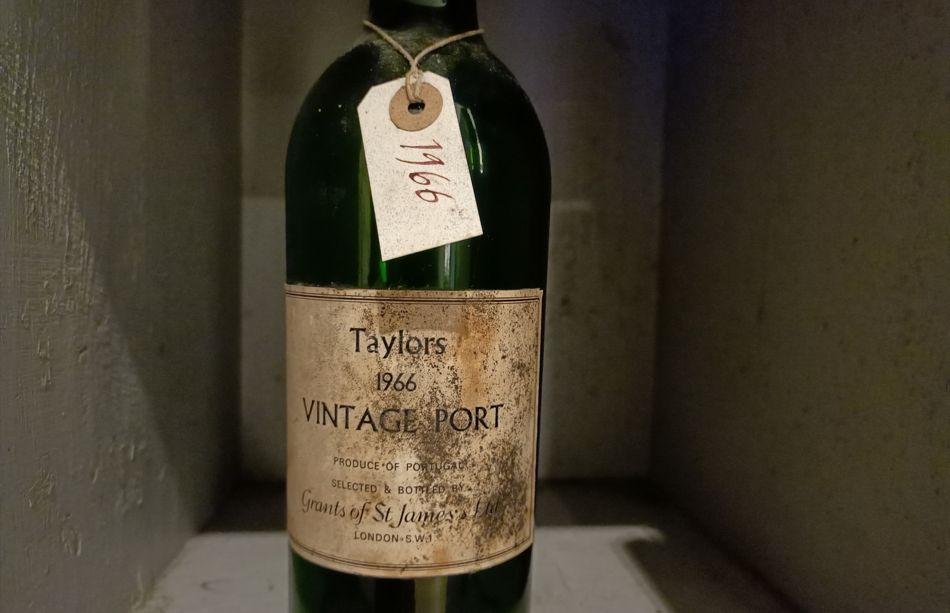
Contents
What is Port wine?
Port is a fortified red wine from the Duoro Valley in Portugal.
Port is made by adding a grape spirit during fermentation, stopping the process before all the sugars in the juice are converted to alcohol. This results in a wine with some natural sweetness.
There are different types of Port, largely defined by how they are aged.
What is Vintage Port?
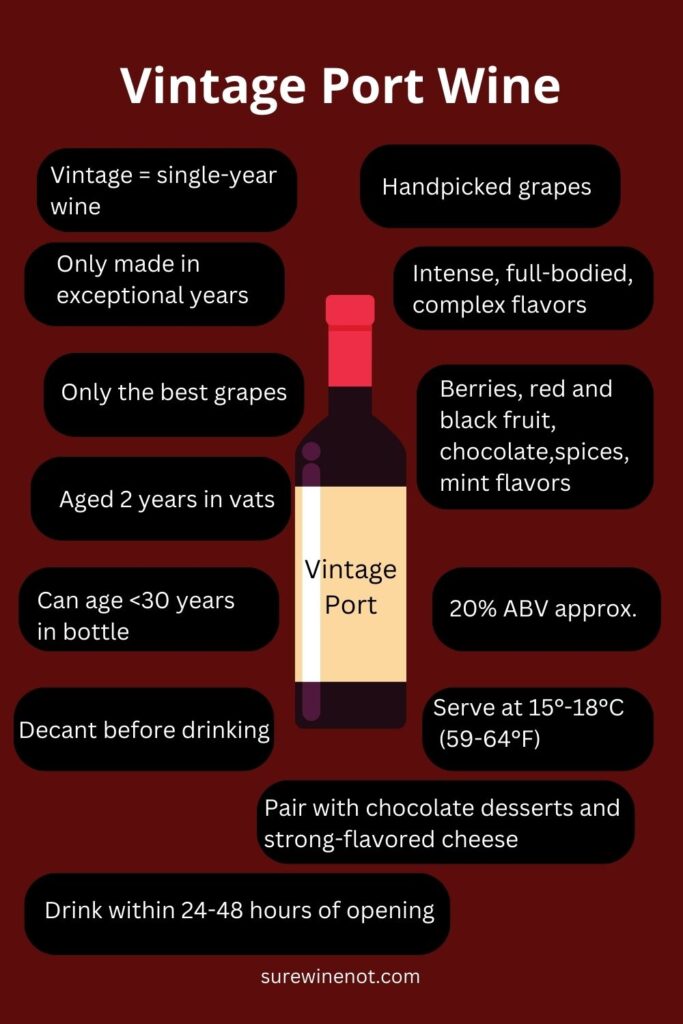
Vintage Port wine is only made in years when the wine is considered to be exceptional and when it is considered to have exceptional ageing potential. There are approximately three Vintage Ports declared each decade.
Less than 1% of all Port sold is Vintage Port. It represents the best of the best.
Port producers are required to register their intention to release a Vintage Port during the second year after the harvest. The wine must be bottled no later than the third year.
Vintage Port is aged in large oak barrels or stainless-steel tanks for around 22 months. Unlike most other Port, it is bottled unfined and unfiltered.
While Vintage Port can be enjoyed young, the concentration of flavors and high level of tannins means that Vintage Ports are capable of ageing in the bottle for decades – at least 30 years.
What Vintage Port tastes like
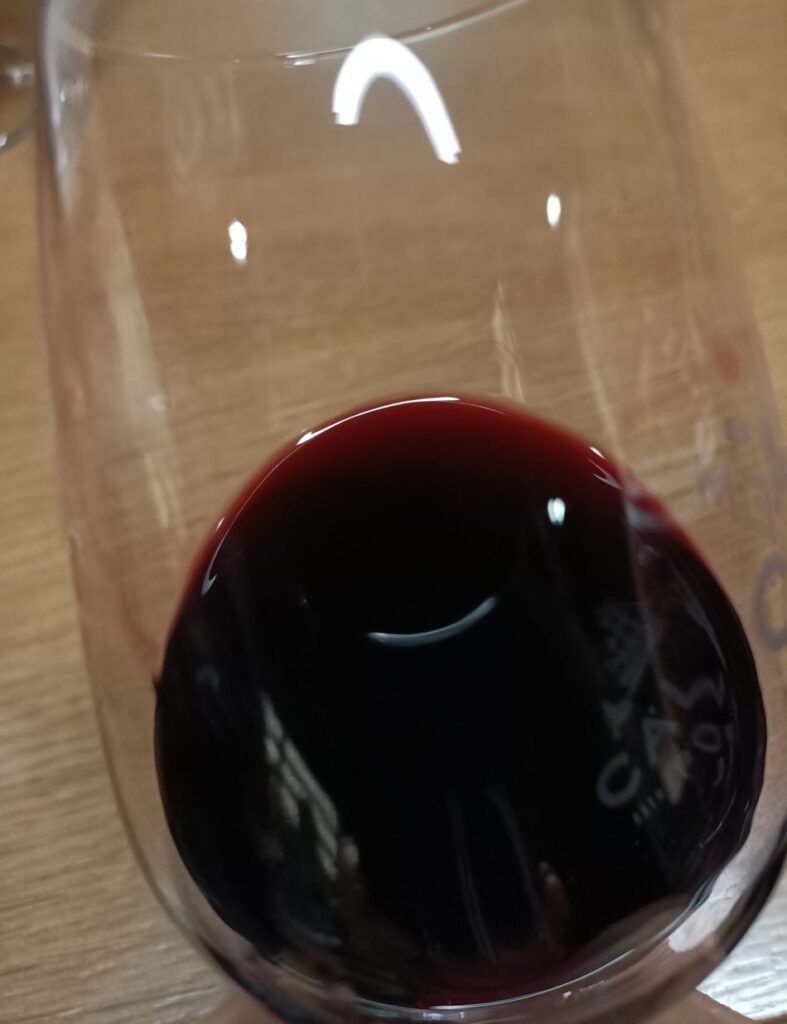
Vintage Port is a sweet, full-bodied, structured, complex wine with intense flavors and a long finish.
The aromas and flavors of young Port are more straight forward than an aged Port. Young Port typically has primary fruit flavors, such as berries, as well as floral and herbal notes.
Aged and mature Ports develop complex tertiary aromas such as dried fruit, caramel, nuts and spices.
How Vintage Port wine is made
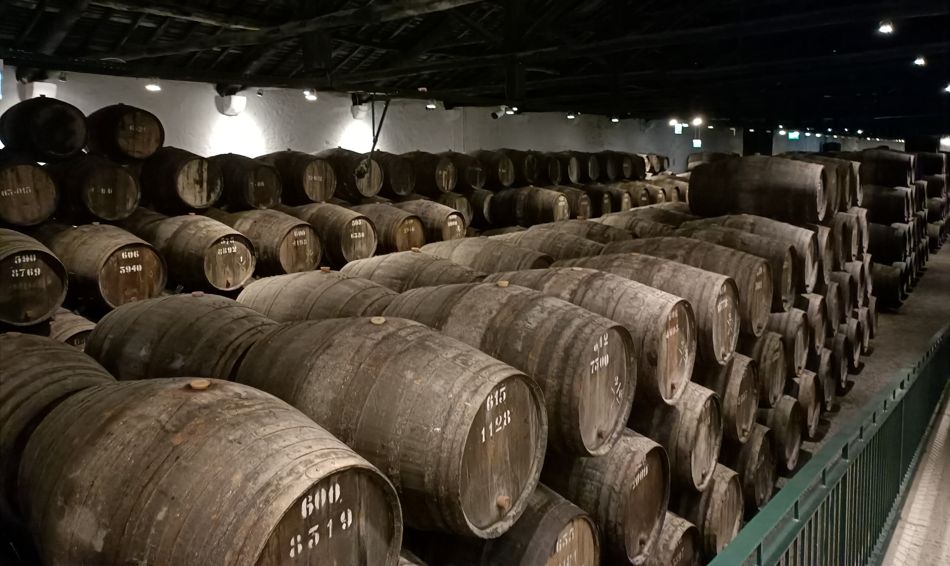
Port grape varieties
There are around 30 different traditional grape varieties that Port wine can be made with.
Each variety contributes its own distinctive character to the wine and thrive under particular growing conditions. The combination of different varieties gives Port both complexity and harmony.
The six best-known grape varieties used to make Port are:
- Touriga Nacional
- Touriga Francesa
- Tinta Roriz
- Tinta Barroca
- Tinto Cao
- Tinta Amarela
Sorting and crushing Port grapes
Freshly picked grapes are brought to the winery for sorting and inspecting. Any damaged or imperfect fruit is removed.
The grapes are then moved to a granite tank called a “lagar” where the grapes are crushed, opening up the skins of the grapes.
Crushing the grapes releases the juice and tannins. Nowadays, most juice extraction is automated using machines like robotic lagares, piston plungers and autovinifiers.
The traditional method to do this is by foot treading.
The first stage of foot treading is called the “corte” or cut. The treaders form a line, standing close together, and advance slowly across the lagar treading the grapes in unison.
The grapes are trodden like this for two hours transforming the grapes into a thick soupy liquid.
The second stage of treading is called “liberdade” or freedom where the treaders work independently. The treaders move around the lagar ensuring the grape skins are evenly distributed in the juice.
The treading process is controlled by the winemaker, but treading can have a festive atmosphere with music and dancing.
Foot treading is labour intensive and therefore expensive, so it is not widely used anymore; however, it is still used to make some premium Port wines.
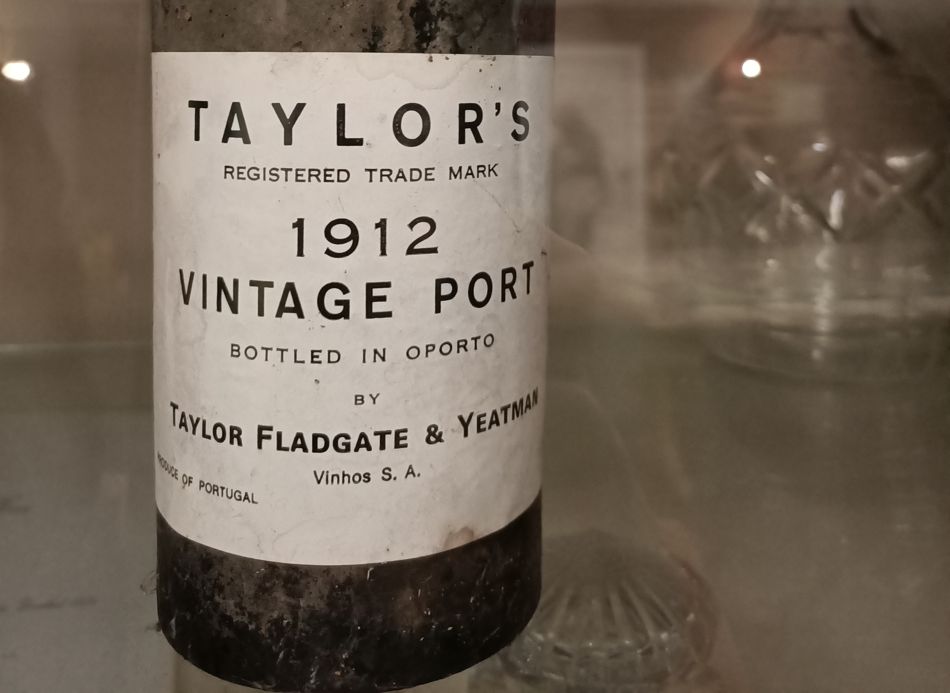
Port wine fermentation
After the juice is released, fermentation begins. During fermentation the grape skins release their aromas and natural pigments and tannins, giving the wine flavor, color and structure.
Approx. 50% of the natural sugars from the grape juice are converted into alcohol. After that, the juice is fortified.
Port fortification
A high-quality grape spirit, which is also known as the “aguardante” is used for fortification. It is colorless, neutral in odor and has a 77% abv.
The fermented grape juice is drawn from the lagar into a metal vessel where it is mixed with grape spirit.
Approximately, one part of grape spirit is added for every four parts of fermenting wine.
This process stops the fermentation of the wine, thereby preserving much of natural sweetness of the grape in the finished wine.
After fortification, the wine is transferred into a vat where it is left to settle. It remains in the vat until the spring of the year following the harvest.
Vintage Port Ageing
Vintage Port is aged in vats for approx. 22 months prior to bottling. The wine will continue to mature and develop in the bottle for at least 30 years.
Understanding Vintage Port Labelling
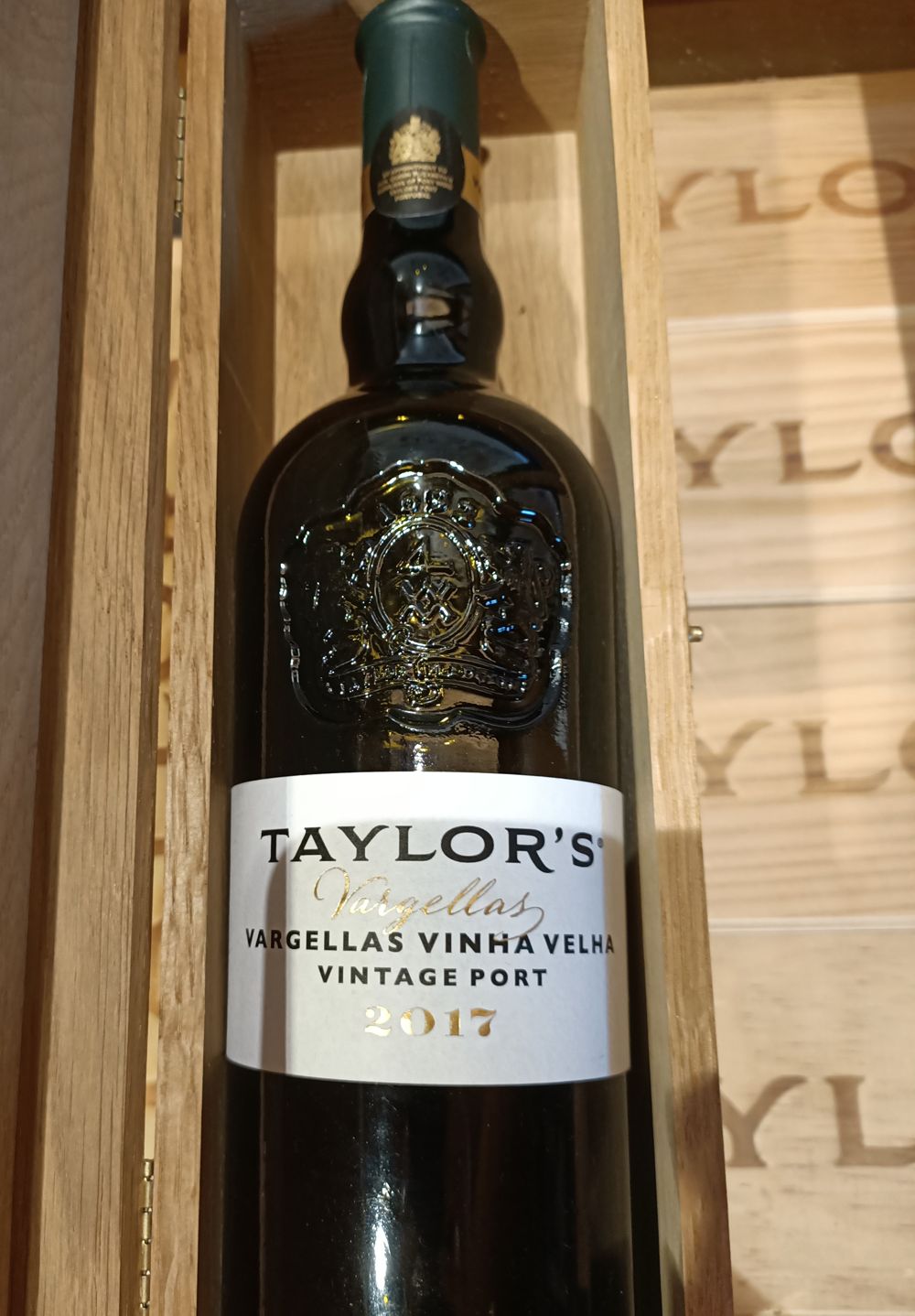
A Vintage Port label will usually have the following information on it:
Name of the Port house: The brand name, for example Taylor’s or Graham’s, will be written on the label.
Year the wine was produced: Vintage Port is by definition wine of a single year. That year will be stated clearly on the label.
Year the wine was bottled: Underneath the vintage year, Vintage Port labels will also usually mention the year it was bottled. Vintage Port is bottled the second year after the harvest.
The rules permit Vintage Port to be bottled in the first six months of the third year, but this rarely happens in practice.
Alcohol level: The label will have the abv of the wine, which is normally around 20%.
Classic Vintage Port labels do not usually mention the name of the estate where the grapes were picked. This is because classic Vintage Port is usually made from the grapes of more than one estate.
Labels that mention the name of an Estate usually only appear on the label for Single Quinta Vintage Port.
Vintage Port bottles
Labels: Vintage Port labels are often understated in design and conveying only the essential information about the wine. For more details, see section on labels above.
Glass: Vintage Port bottles are made with dark glass to minimise exposure to light which can damage the wine.
Neck: The neck of Vintage Port bottles is usually specially designed to grip the cork fully, ensuring a tight seal that prevents air oxidising the wine.
Cork: Vintage Port wine is sealed with long natural corks that protect the wine from air as it ages. The cork is usually branded with the name of the Port house and the vintage year.
Capsule: Before leaving the winery, the capsule over the cork is replaced with a new clean one. The capsule helps to protect the cork and wine.
How to store Vintage Port
Vintage Port should be store on its side ensuring that the cork is in contact with the wine. If the cork is not kept moist, it can dry out and shrink letting air into the bottle.
Like all wine, it should be stored in cool, constant temperature and away from bright lights.
Should you decant Vintage Port?
Vintage Port that has been aged for a significant period of time should be decanted.
As Vintage Port ages, it throws a heavy sediment. Decanting wine ensures the sediment, which can taste unpleasant, remains in the bottle.
For more details on decanting wine see our article on how to decant wine.
Vintage Single Quinta Port wine
During years where a vintage is not declared, wine producers will release their best wines as Single Quinta Vintage Ports. They are high-quality wines, but they are not considered to be as prestigious as Vintage Port.
It is common for Single Quinta Port to be bottle aged prior to release, so they can often be bought ready to drink.
They are aged in vats for approx. 22 months before bottling. The wine continues to mature and develop in the bottle for at least 20 years.
Read with confidence: I am a certified wine expert (WSET L3).


